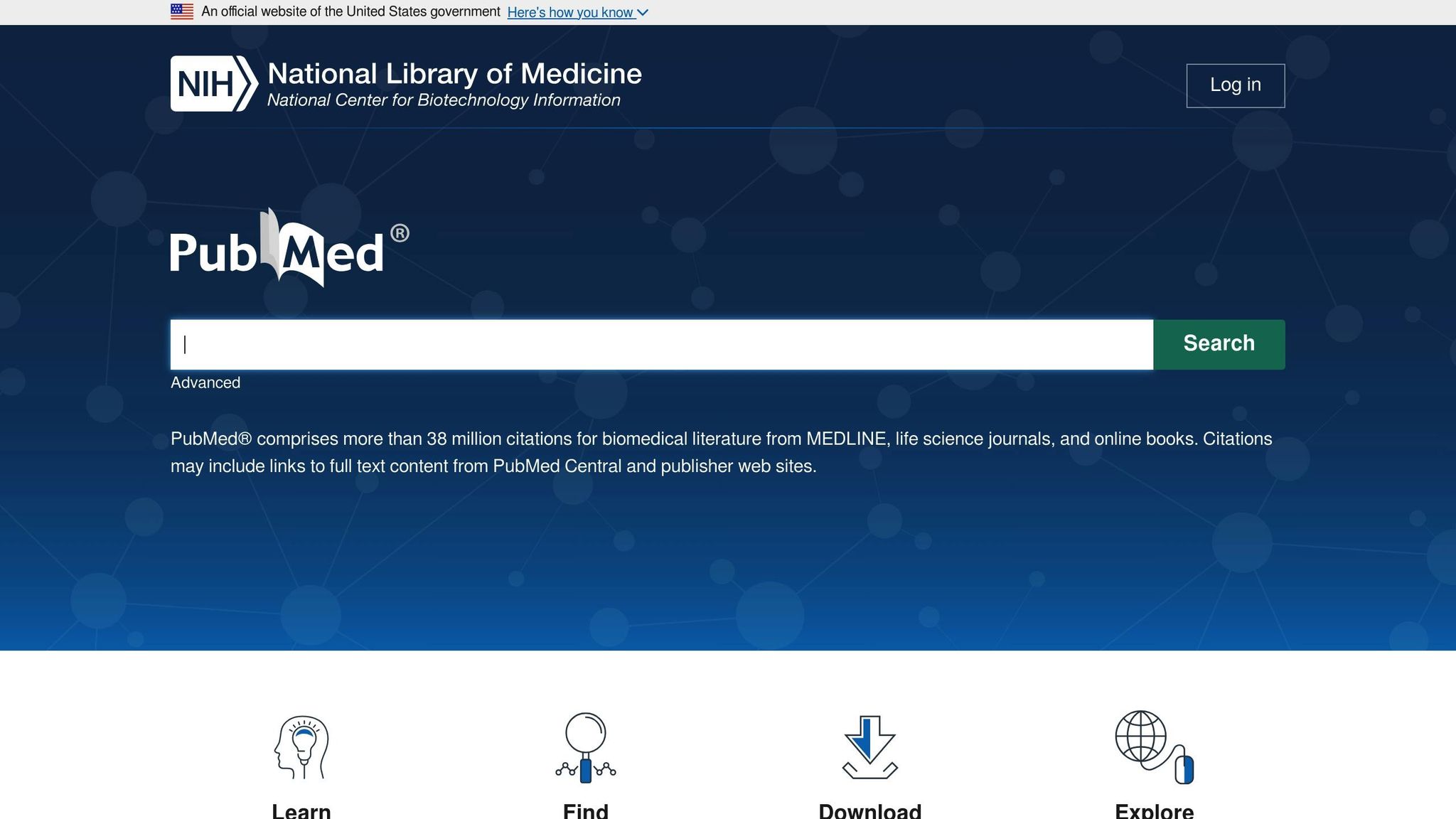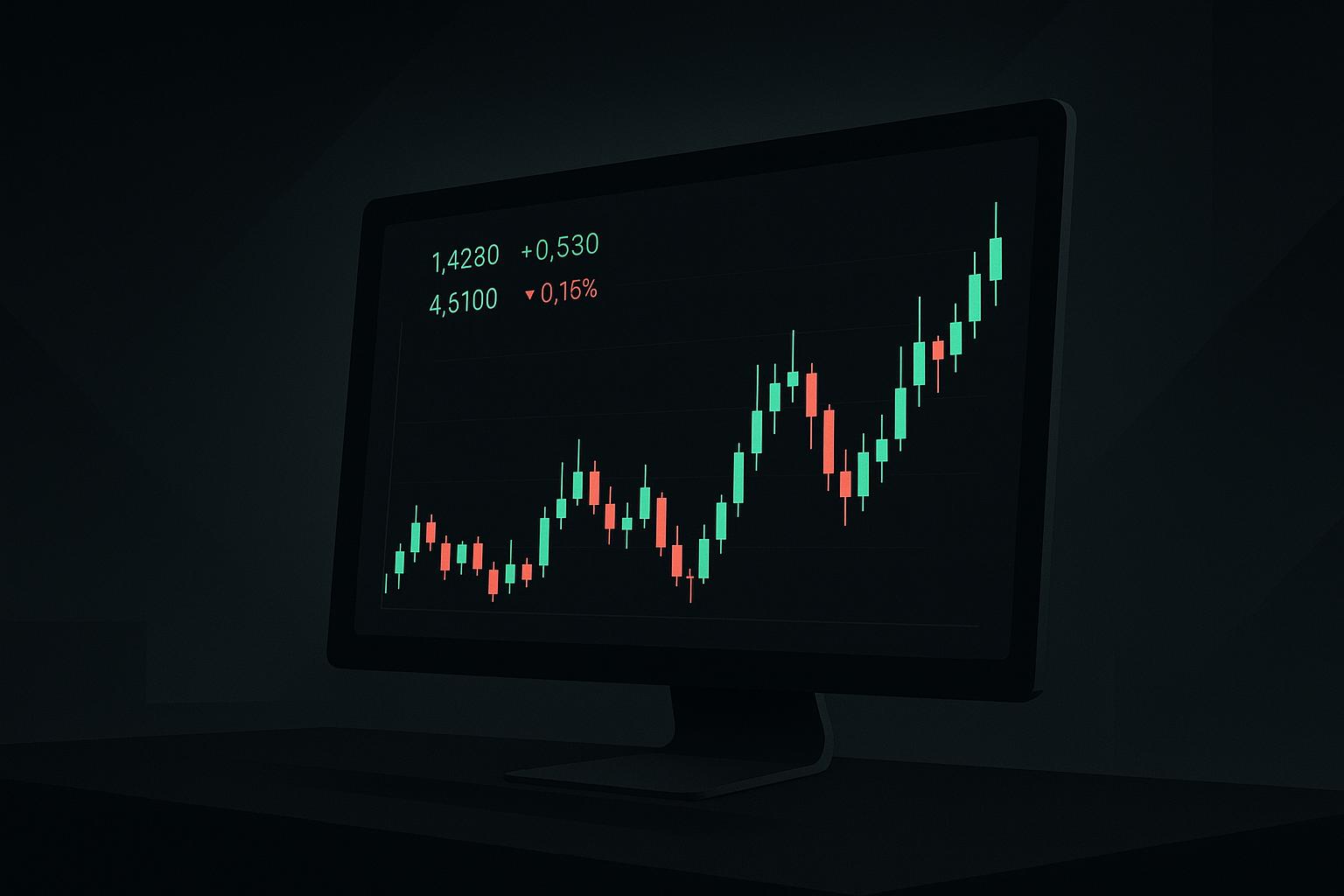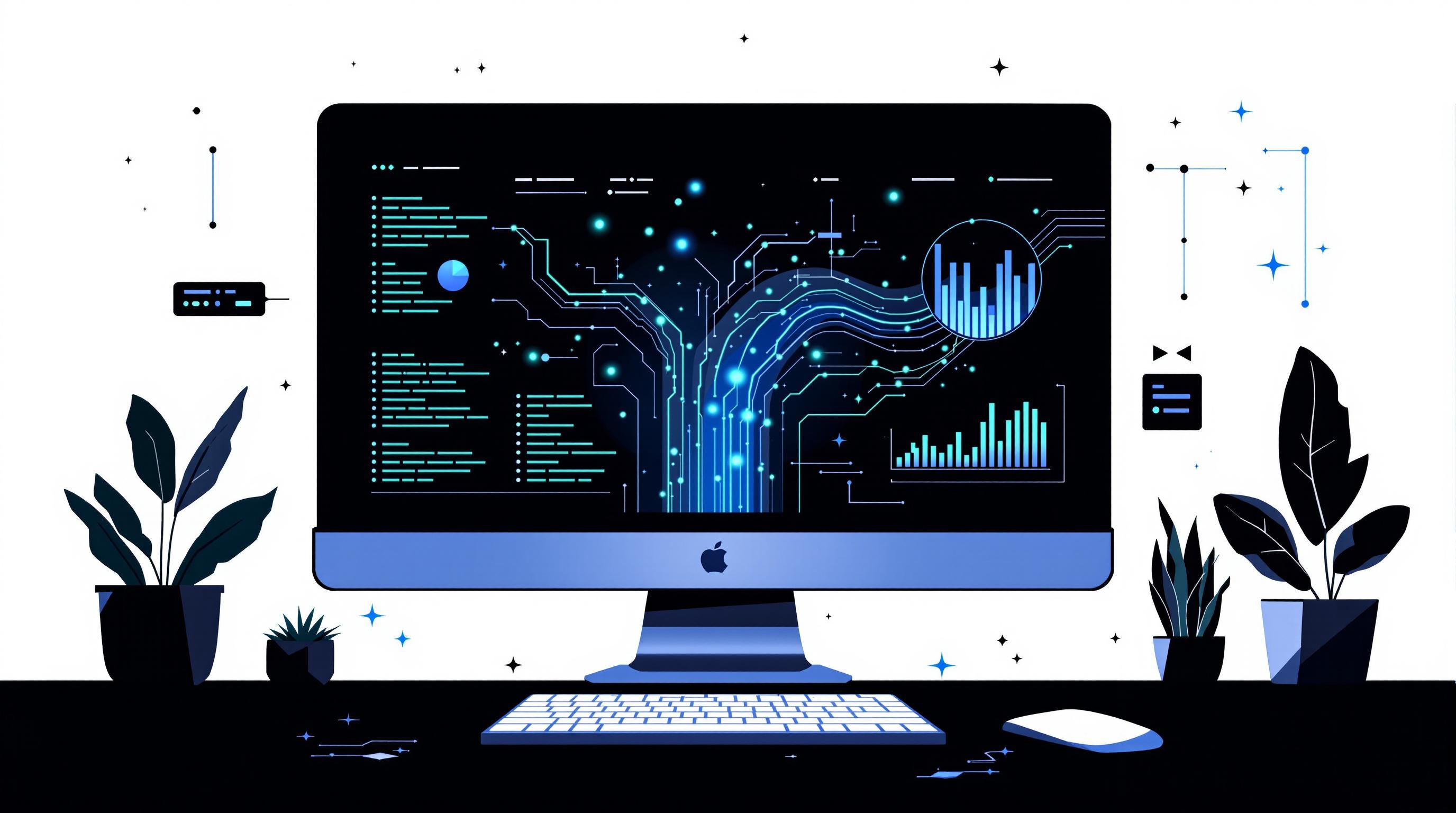Web scraping is transforming healthcare by providing tools to collect and analyze digital data for better decision-making and patient care. Here's how it’s being used:
- Data Collection: Pull insights from medical research, patient reviews, and public health trends.
- Real-Time Monitoring: Track disease patterns and health trends to respond faster.
- Data Integration: Combine diverse sources like clinical trials and research databases into unified formats.
- Privacy Compliance: Follow HIPAA rules by anonymizing data and securing sensitive information.
Quick Benefits:
- Improved Decisions: Better insights from structured data.
- Cost-Effective: Collect large datasets at just $0.005 per page.
- Privacy-Protected: Ensures compliance with U.S. privacy laws.
Web scraping is helping healthcare providers streamline data collection while adhering to strict privacy standards, leading to better patient outcomes. Ready to start? Focus on secure tools, clear goals, and HIPAA-compliant practices.
Healthcare Data Integration Through Web Scraping
Combining Multiple Data Sources
Integrating healthcare data involves merging various online sources while safeguarding data accuracy. Modern web scraping techniques allow organizations to combine information from clinical trials, patient reviews, and research databases into a single, cohesive resource.
To achieve this, it's crucial to establish clear and consistent data collection methods. When pulling data from multiple sources, organizations must ensure uniform formatting and thorough validation. This step is essential for managing details like patient demographics, treatment results, and clinical observations. These well-organized datasets can then seamlessly connect to APIs for further use.
API Integration Methods
Web scraping APIs simplify the task of linking scraped healthcare data to existing systems. These tools can convert messy, unstructured web data into structured formats like JSON, making it easier to integrate with healthcare databases and analytics platforms.
"After trying other options, we were won over by the simplicity of InstantAPI.ai's Web Scraping API. It's fast, easy, and allows us to focus on what matters most - our core features." - Juan, Scalista GmbH
Key areas to focus on for API integration include:
- Real-time data processing: Ensuring healthcare systems have immediate access to updated information
- Structured output: Formatting raw data into standardized JSON for easier use
- Error handling: Incorporating strong validation to maintain data reliability
- Authentication protocols: Protecting sensitive healthcare data during transfers
US Data Format Standards
Adhering to U.S. formatting standards is essential for consistent and compliant healthcare data integration. Below is a quick reference for common standards:
| Data Type | U.S. Standard Format | Example |
|---|---|---|
| Dates | MM/DD/YYYY | 04/30/2025 |
| Currency | USD with 2 decimals | $1,234.56 |
| Phone Numbers | (XXX) XXX-XXXX | (555) 123-4567 |
| Social Security Numbers | XXX-XX-XXXX | 123-45-6789 |
| Medical Record Numbers | Facility-specific | MRN-2025-12345 |
Using these standards ensures compatibility and supports accurate data analysis.
Standardized data formats bring several benefits to healthcare providers:
- Fewer errors in patient identification and record matching
- Improved interoperability between systems
- Better reporting accuracy for compliance purposes
- Easier analysis of healthcare trends and outcomes
Web Scraping Uses in Healthcare
Patient Review Analysis
Web scraping can help healthcare providers gain a better understanding of patient experiences. By collecting reviews from verified healthcare platforms, providers can pinpoint areas where services fall short and work on improving care. Analyzing feedback trends also helps in making meaningful adjustments to enhance patient satisfaction.
Health Trend Monitoring
Healthcare organizations can use web scraping to track public health trends and detect potential outbreaks early. By combining data from sources like the CDC Open Data API with social media, local news, and public announcements, they can get a fuller picture of community health. This approach helps identify patterns in seasonal illnesses and supports timely responses to public health concerns, offering a proactive way to complement traditional research efforts.
Medical Research Data Collection
Web scraping simplifies the process of gathering medical research data. By automating the collection of information from clinical trial registries, research publications, and medical databases, healthcare providers can stay updated on the latest findings. This streamlined access to research supports better clinical decision-making.
How to Scrape PubMed and Research Papers

sbb-itb-f2fbbd7
Web Scraping Tools and Methods
Healthcare organizations face the challenge of collecting data efficiently while staying compliant with strict privacy laws. Modern web scraping tools are designed to streamline this process while keeping security and compliance in check.
Healthcare Scraping Tools
To handle the complexity of healthcare data, specialized tools are essential. InstantAPI.ai stands out as a solution for extracting structured data from medical websites and databases. It simplifies tasks like gathering clinical trial data, patient reviews, and research publications with features such as JavaScript rendering and custom data output formats.
One of its standout capabilities is worldwide geotargeting, supported by over 65 million rotating IPs. This ensures consistent data access across regions, which is especially helpful when pulling information from multiple healthcare institutions or research centers.
Now, let’s take a look at some common challenges and how they can be addressed.
Common Problems and Fixes
Scraping healthcare data comes with its own set of hurdles. Here’s how these challenges can be tackled:
IP Blocking Prevention
Websites often block repeated access from the same IP. Advanced proxy management systems, like those in InstantAPI.ai, rotate millions of IP addresses to avoid detection and maintain smooth data collection.
CAPTCHA Management
Many healthcare websites use CAPTCHA to block bots. Advanced CAPTCHA bypass tools ensure uninterrupted scraping without compromising the quality or flow of data.
Handling Large Datasets
Managing vast amounts of healthcare data can get tricky. Tools offering efficient processing and customizable output formats ensure that even large datasets remain well-organized and easy to access.
US Privacy Law Compliance
For healthcare organizations, complying with HIPAA (Health Insurance Portability and Accountability Act) is non-negotiable when using web scraping tools. Here’s how compliance can be ensured:
Data Anonymization
Patient data must be anonymized during the scraping process. This includes stripping personal identifiers and storing data securely in line with HIPAA standards.
Terms of Service Compliance
Organizations must respect website terms of service by:
- Following rate limits
- Adhering to robots.txt guidelines
- Ensuring proper access permissions
- Documenting all data collection activities
Security Measures
Strong security protocols are critical for HIPAA compliance. These include:
- Encrypting data during transmission
- Using secure storage solutions
- Conducting regular security audits
- Implementing strict access controls
Data Collection Guidelines
When it comes to scraping tools and privacy compliance, responsible healthcare web scraping requires strict attention to data protection and accuracy. Follow these guidelines to ensure safe and effective data collection.
Patient Data Protection
Healthcare organizations must prioritize anonymizing data during web scraping activities.
Key Data Masking Practices:
- Remove personal identifiers in compliance with HIPAA regulations
- Encrypt sensitive information
- Enforce role-based access to data
- Document all processes thoroughly
- Keep identifiable data separate from other datasets
Using secure data pipelines that automatically remove personal details before storage is another way to protect patient information. At the same time, it’s crucial to ensure the collected data meets high standards of accuracy.
Data Accuracy Standards
Maintaining data accuracy involves a structured approach:
Steps for Data Validation:
- Cross-check data against multiple trusted sources
- Define and monitor data quality metrics
- Keep detailed records of data sources
- Use automated systems to detect and flag errors
Pairing automated tools with periodic manual checks can enhance data reliability. Beyond accuracy, ethical practices are essential at every stage of healthcare data scraping.
Legal and Ethical Rules
Efficiency must always align with strong ethical safeguards.
"Big data research reveals that the boundary between research ethics and public health ethics is more a matter of emphasis and orientation than a hard line between incompatible frameworks." - Ballantyne
Compliance Essentials:
-
Data Collection Scope
Gather only the information necessary for specific healthcare purposes, and document the reasons for collecting each type of data. -
Contingency Planning
Create strict protocols to address potential breaches, especially when integrating scraped data with private healthcare records. -
Public Health Considerations
Ensure data collection methods are inclusive and do not unintentionally exclude vulnerable groups.
Ethical Data Collection Practices:
- Obtain permissions and be transparent about data use
- Conduct regular independent ethical reviews
- Develop clear data retention policies
- Establish protocols for managing unexpected sensitive data
Regularly update these practices to reflect changes in ethical standards and technological advancements.
Wrapping It Up
Web scraping offers a practical approach to integrating healthcare data while maintaining strict privacy standards. It’s changing how healthcare data is collected, helping improve patient care without compromising confidentiality.
Key Takeaways
Healthcare organizations can use web scraping to gain insights across various areas while staying compliant with U.S. privacy laws. Here’s a quick recap of the main advantages:
- Improved Data Integration: Merges data from diverse sources seamlessly.
- Affordable Analysis: Collects large datasets at just $0.005 per page.
- Privacy-Conscious Collection: Adheres to HIPAA standards for data protection.
- Automated Tracking: Monitors health trends and patient feedback in real time.
How to Get Started
Ready to implement web scraping in healthcare? Follow these steps:
-
Identify Your Data Needs
Determine the specific metrics and data points required for your analysis. Clear data collection goals help maintain compliance with privacy laws. -
Establish Data Security Measures
Set up protections like encryption, restricted access, and automated anonymization to meet HIPAA requirements. -
Set Scraping Parameters
Use tools with advanced features like geotargeting and JavaScript rendering to ensure thorough data collection.
Balancing efficient data collection with strict privacy compliance is essential. By following these steps and using the right tools, healthcare organizations can use web scraping to improve patient outcomes and streamline operations.
FAQs
How can web scraping comply with HIPAA regulations when handling sensitive healthcare data?
Web scraping can comply with HIPAA regulations by ensuring that any protected health information (PHI) is properly de-identified. This can be achieved using methods like the Safe Harbor approach, which removes specific identifiers such as names, Social Security numbers, and medical record numbers, or the Expert Determination method, where a qualified expert assesses and minimizes the risk of re-identification.
To maintain compliance, it’s critical to document all de-identification processes and implement safeguards like secure data storage, restricted access, and encryption. By adhering to these practices, organizations can responsibly use web scraping to gather healthcare data while protecting patient privacy.
What challenges come with using web scraping in healthcare, and how can they be managed effectively?
Web scraping in healthcare can face several challenges, including data privacy concerns, compliance with regulations like HIPAA, and ensuring data accuracy and reliability. These issues can be managed effectively with proper planning and tools.
To address these challenges, organizations should:
- Ensure compliance with privacy laws: Always verify that scraping activities align with regulations like HIPAA, and avoid collecting personally identifiable information (PII) without proper authorization.
- Use ethical scraping practices: Focus on publicly available data and respect website terms of service to avoid legal issues.
- Validate and clean data: Implement robust data validation processes to ensure the information collected is accurate and useful.
By taking these steps, healthcare professionals can responsibly leverage web scraping to gather insights while minimizing risks.
How can healthcare organizations use web scraping to combine data from different sources and enhance patient care?
Web scraping allows healthcare organizations to collect and consolidate data from diverse sources like medical research articles, public health records, and patient feedback. By integrating this data, healthcare providers can identify trends, make informed decisions, and improve patient outcomes.
Using tools like Python libraries (e.g., BeautifulSoup or Scrapy), organizations can automate data extraction while ensuring compliance with privacy regulations. This enables efficient analysis of large datasets, helping to optimize treatments, monitor public health, and enhance overall care delivery.


